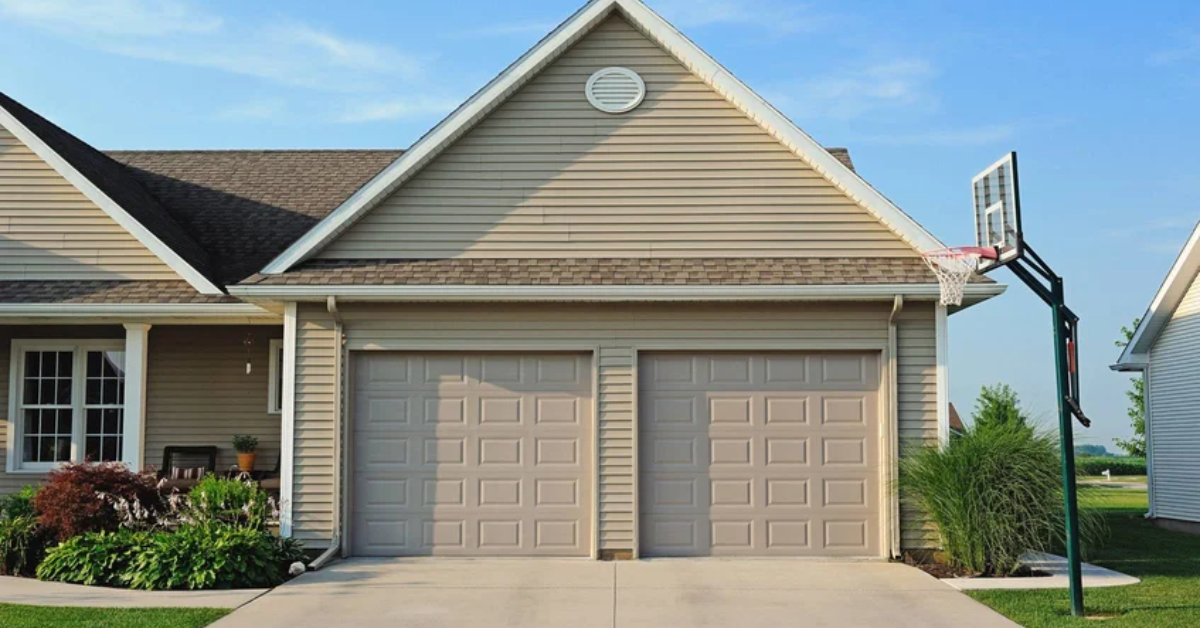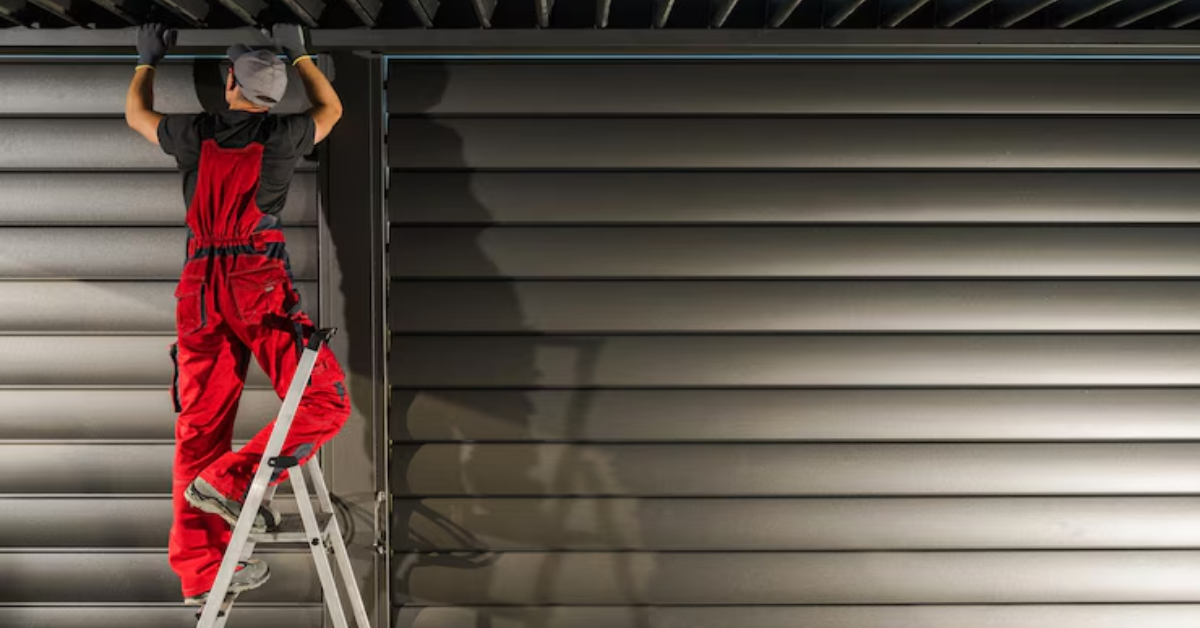Essential Maintenance Tips for Long-lasting Garage Door Panels
Garage door panels, often the unsung heroes of a home's facade, play a pivotal role in not just enhancing curb appeal but also ensuring the security and functionality of your garage. However, their significance is often overlooked until issues arise. Recognizing the importance of maintaining these panels is fundamental to preserving their longevity and safeguarding the overall integrity of your garage.
In this comprehensive guide, we delve into the essential maintenance tips crucial for
extending the lifespan of your garage door panels. From routine inspections to proactive care measures, this blog aims to equip homeowners with practical insights into preserving these panels' condition, thereby preventing costly repairs and ensuring seamless functionality.
By understanding the necessity of regular upkeep and adopting a proactive approach towards maintenance, you can not only enhance the aesthetics of your property but also ensure the safety and efficiency of your garage door system. Join us as we explore the key strategies and expert advice necessary for maximizing the durability and performance of your garage door panels.
The Basics of Garage Door Panels
Garage door panels are the integral sections that collectively form the surface of your garage door. These panels are not only responsible for the visual appeal of your home's exterior but also contribute significantly to the door's structural integrity and overall functionality. Each garage door panel comprises several essential components that work together to facilitate smooth operation. These components typically include:
Panels:
The primary segments that make up the door's surface. They are usually made of sturdy materials such as steel, aluminum, wood, or fiberglass, providing structural support and insulation.
Hinges and Rollers: These are the mechanisms that enable the panels to move smoothly along the tracks. Hinges connect the panels, allowing them to pivot, while rollers ensure effortless movement.
Insulation:
Some panels are
equipped with insulation, such as foam or other insulating materials, to regulate temperature and enhance energy efficiency.
Weather Stripping: Found along the edges of the panels, weather stripping helps seal the gaps between panels, preventing drafts, moisture, and debris from entering the garage.
Decorative Features:
Depending on the design, garage door panels might include decorative elements or windows to enhance aesthetics.
Common Materials Used:
Garage door panels are crafted from various materials, each with its own set of advantages in terms of durability, aesthetics, insulation, and maintenance requirements.
Steel: Known for its strength and durability, steel panels are resistant to
dents and provide excellent security. They often come in different gauge thicknesses and can be insulated for energy efficiency.
Aluminum: Lightweight yet sturdy, aluminum panels are rust-resistant and suitable for humid climates. They are also customizable and relatively low-maintenance.
Wood:
Wooden panels offer a classic, elegant look and can be stained or painted to match the home's aesthetic. However, they require regular maintenance to prevent warping, rotting, or insect damage.
Fiberglass: Resistant to moisture and pests, fiberglass panels mimic the look of wood but require less maintenance. They are also good insulators.
Vinyl: Vinyl panels are durable, low-maintenance, and resistant to dents and rust. They are available in various styles and colors, offering versatility in design.
Understanding these components and materials is crucial for selecting the right garage door panels and implementing proper maintenance practices to ensure their longevity and optimal performance.
Regular Inspection Checklist
Maintaining the longevity of your garage door panels begins with regular inspections. A comprehensive checklist ensures you catch potential issues early, allowing for timely repairs and preventing larger, costlier problems down the line. Conducting a visual inspection is the cornerstone of panel maintenance. Here's a step-by-step guide to a thorough visual examination:
- Examine each panel's surface for dents, scratches, or other damages. Pay attention to the paint or finish for signs of peeling or corrosion.
- Inspect hinges, rollers, and tracks for any misalignments, rust, or wear. Tighten loose bolts or screws if necessary.
- Check the weather stripping for cracks, tears, or gaps. Damaged weather stripping can compromise insulation and allow pests, drafts, or moisture to enter the garage.
- Open and close the door to observe any unusual noises, jerky movements, or resistance. These could indicate issues with the panels or the door's mechanisms.
- Ensure that safety sensors and auto-reverse mechanisms are functioning correctly by conducting a test to verify their responsiveness.
Cleaning Techniques
Maintaining clean garage door panels isn't just about appearance—it significantly contributes to their durability. Effective cleaning techniques are essential for keeping panels in optimal condition. Begin by selecting suitable cleaning products: opt for mild detergent solutions like dish soap or car wash liquid mixed with water, steering clear of abrasive cleaners that could harm the panel's surface. Use soft cloths or sponges to gently scrub and a bucket of clean water for rinsing.
Follow a step-by-step cleaning process: start by removing debris with a soft brush, then prepare the cleaning solution, conducting a spot test beforehand. Proceed to gently scrub the panels in sections, avoiding excessive pressure, before thoroughly rinsing off the solution with a hose. Dry the panels using a clean cloth to prevent water spots, and for extra shine, consider applying a mild car wax or panel-friendly polish. Regularly employing these cleaning methods not only upholds the panels' appearance but also eliminates potential dirt build-up that could harm the panels over time, ultimately prolonging their lifespan.
Lubrication and Rust Prevention
Lubrication and rust prevention play pivotal roles in ensuring the smooth operation and prolonged lifespan of garage door panels and their components. The importance of regularly lubricating hinges and rollers cannot be overstated in maintaining the functionality and preventing premature wear and tear of the door system.
Hinges and rollers, integral parts of the garage door mechanism, endure significant stress and friction during the door's operation. Lubrication serves as a protective measure, reducing friction between moving parts and minimizing wear. By applying lubricants to these components, such as silicone-based or lithium-based lubricants specifically designed for garage doors, you can ensure smooth movement, minimize noise, and prevent premature deterioration of these crucial parts.
Rust and corrosion are common adversaries for metal components, especially in garage door systems exposed to various weather conditions. Preventing rust is fundamental to preserving the structural integrity of the hinges, tracks, and rollers. Several methods effectively shield these metal parts from rust and corrosion.
Primarily, using rust-resistant materials for garage door components, such as galvanized steel or aluminum, is an initial step in preventing corrosion. Additionally, applying a rust-inhibiting coating or rust-resistant sprays specifically formulated for metal surfaces creates a protective barrier, shielding the components from moisture and oxidation. Regular inspections to identify any signs of rust or corrosion and prompt treatment using appropriate rust inhibitors or cleaners are also essential in preventing further damage.
By prioritizing regular lubrication of hinges and rollers while employing effective rust prevention methods, homeowners can significantly prolong the life of their garage door panels and maintain the overall efficiency and smooth operation of the door system. These proactive measures not only ensure the door operates optimally but also reduce the need for costly repairs or replacements due to premature wear and rust-related damage.
Weather Stripping Maintenance
Weather stripping serves as a crucial element in maintaining the integrity and efficiency of garage door panels by sealing the gaps between panels and the door frame. Its primary purpose is to create a barrier against external elements, including weather, dust, pests, and noise, thus contributing to insulation and protecting the interior space from external intrusions.
Regular maintenance of weather stripping is vital to ensure its effectiveness over time. Understanding how to replace or repair damaged strips is essential for preserving the
door's insulation and maintaining its overall functionality. Replacing damaged weather stripping involves several steps. First, identify the type and size of the stripping needed for replacement. Measure the dimensions accurately to ensure a proper fit. Removing the old weather stripping without causing damage to the panels or the frame is crucial. Carefully pry or peel off the old stripping, ensuring any adhesive residue is cleaned off before applying the new stripping.
Installing new weather stripping requires meticulous placement to snugly fit between panels and the door frame, commonly using adhesive-backed stripping firmly pressed along the frame's length for a tight seal. Repairing minor damage involves using weather stripping adhesive or sealant for small tears or gaps, offering temporary functionality until replacement. Regular inspection helps identify wear or tears early, allowing prompt repair or replacement to prevent air leaks, bolster insulation, and maintain garage efficiency.
The importance of weather stripping allows homeowners to prioritize its maintenance, replacing damaged strips promptly to ensure energy savings and improved comfort in their garage.
Panel Repair and DIY Tips
Panel Repair and DIY Tips are valuable for maintaining garage door panels, ensuring their functionality and aesthetic appeal. While minor repairs and regular maintenance can be managed through DIY efforts, knowing when to enlist professional help is equally essential for more complex issues.
Small repairs and maintenance tasks often include addressing minor dents, scratches, or paint damage on the panels. DIY methods for these issues may involve using simple tools like a plunger for small dents, gentle sanding or filling for scratches, and touch-up paint to restore the panel's finish. Regularly cleaning and lubricating hinges, rollers, and tracks also fall under routine maintenance, ensuring smooth operation.
However, there are instances when calling a professional becomes necessary. If the damage to the panels is extensive, such as severe dents, significant structural damage, or if the panels are out of alignment, seeking professional assistance is advisable. Professionals have the expertise and tools to handle complex repairs safely and effectively.
Knowing when to call a professional ultimately depends on the severity of the issue and one's comfort level and expertise in handling garage door repairs. While DIY efforts can be effective for minor repairs and routine maintenance, it's crucial to recognize the limitations and seek professional help when necessary to ensure the safety and proper functioning of the garage door system.
Seasonal Maintenance Guide
Seasonal Maintenance Guide for garage door panels involves adapting care routines based on varying weather conditions. Summer and winter care tips differ due to temperature and environmental changes, requiring specific adjustments in maintenance.
During summer, focus on cleaning and lubricating the panels and components due to increased dust and debris accumulation. Check for any signs of wear caused by heat and ensure proper lubrication to prevent parts from seizing.
Winter care involves addressing issues related to cold temperatures. Inspect weather stripping for any gaps or damage that might compromise insulation against cold drafts. Additionally, lubricate hinges and rollers using specialized lubricants suitable for lower temperatures to prevent freezing and maintain smooth operation.
Adapting maintenance to different seasons is crucial. In warmer months, pay attention to sun exposure effects on the panels, including potential fading or warping of certain materials. Contrastingly, in colder weather, be mindful of the impact of snow, ice, and moisture on the door's mechanisms.
Overall, adjusting maintenance routines based on seasonal changes ensures optimal performance and longevity of garage door panels, addressing specific challenges posed by different weather conditions throughout the year.
Conclusion
Prioritizing regular maintenance for garage door panels by adhering to key practices such as visual inspections, lubrication, weather stripping care, and timely repairs ensures optimal functionality and longevity. Consistent upkeep not only safeguards against potential issues but also preserves the door's efficiency and enhances the overall safety and aesthetics of your home. Embracing these maintenance practices empowers homeowners to enjoy a reliable and well-maintained garage door system for years to come.




